The Hermès Empire: A 187-Year Journey from Harness Shop to Luxury Icon
How a commitment to craftsmanship and family stewardship created a $200 billion empire, withstanding feuds, feeding desire, and fending off the luxury industry's biggest takeover.
Last month I shared a deep dive into the LVMH empire, inspired by a mammoth episode of the Acquired podcast. The response was fantastic, and I’m excited to bring you another luxury brand breakdown. For those who relish these long-form explorations, I assure you: You won’t be disappointed!
Today we’ll dissect another epic Acquired episode, diving into the Hermès story. I will include quotes from the episode to add some colour to the experience. I must reiterate, this isn’t a replacement for the full podcast experience - as I said last time, it probably provides ~ 80% of the content in ~10% of the time. This time, I have added detail which the podcast didn’t include - so that’s an added bonus, even if you’ve already listened to the podcast.
I must admit, it took me a bit longer than anticipated to create this post, but I loved every minute of it, and know you will too.
Enjoy, and don’t forget to hit the ❤ button on your way out.
ScrewDownCrown is a reader-supported guide to the world of watch collecting, behavioural psychology, & other first world problems.
Table of Contents
Note: Navigation links only seem to work on desktop, not mobile. Apologies, but this was out of my control!
Prologue (1 minute)
The Foundations of a Dynasty (4 minutes)
Changing Times: The Rise of the Saddle (4 minutes)
The Automobile Age and American Inspiration (2 minutes)
The Roaring Twenties and the Birth of the Handbag (2 minutes)
The Hermès Museum (1 minute)
Hermès’ Foray into Watchmaking (3 minutes)
The Era of Robert Dumas and the Birth of Whimsy (5 minutes)
The Birth of Icons: Grace Kelly and the Kelly Bag (3 minutes)
Challenges and Transformation: The Jean-Louis Dumas Era (3 minutes)
The Value of Craftsmanship: A Culture of Excellence (3 minutes)
The Birkin Bag: A Happy Accident (2 minutes)
The Allure of Scarcity (3 minutes)
The Arnault-Hermès Saga: A Battle for the Luxury Crown Jewel (5 minutes)
The Modern Era: Challenges and Innovations (5 minutes)
The Hermès Production Model (1 minute)
The Hermès Paradox: Scarcity in an Age of Abundance (1 minute)
Looking to the Future: Challenges and Opportunities (1 minute)
Epilogue (1 minute)
Total estimated reading time: ~ 40-50 minutes
Prologue
Back to Table of Contents
For almost two centuries, the name Hermès has been synonymous with unparalleled luxury, craftsmanship, and French savoir-faire. From its humble beginnings as a harness workshop in 19th century Paris to its current status as a global icon of refinement, Hermès has woven a tale to rival its famous silk scarves. This is a story of family, of tradition zealously guarded yet boldly reinvented, and of an unwavering commitment to quality that has withstood the test of time. As we unravel the rich history, we discover not just the evolution of a brand, but a reflection of changing times, tastes, and the very meaning of luxury itself.
“Today, we tell the story of a handbag company that won’t sell you a handbag, a traditional saddle maker that makes very little of their revenue from saddles, a company that somehow has grown to be worth over 200 billion despite rejecting manufacturing efficiencies and economies of scale, a company so obsessed with craft and a reputation for quality that they have stayed independent while every other luxury brand has merged into conglomerates.”
Side note: Hermès is pronounced AIR-MEZ. The H is silent, and it doesn’t end with a MEEZ sound. And don’t forget:
The Foundations of a Dynasty
Back to Table of Contents
Our tale begins not in the fashion capital of Paris, but in the German town of Krefeld, where Thierry Hermès was born in 18011. As the sixth child of a family of innkeepers, Thierry’s destiny seemed set, but fate had other plans. The Napoleonic Wars, which brought glory to France, also brought tragedy to the Hermès family. Thierry’s parents and all five of his siblings were killed, leaving him an orphan at just 20 years old. This places us in 1821.
“1821, pretty rough time out in the world. Do you know who was born in this year, 1821, and was also an orphan? Yup. Louis Vuitton himself. Twenty years younger than Thierry Hermes, but also an orphan.”

Seeking a fresh start, Thierry made his way to Normandy, France, where he apprenticed under a master craftsman, learning the art of equestrian equipment craftsmanship. For 16 years, Thierry honed his skills before finally setting up his own shop in Paris in 1837. Located on the Rue Basse-du-Rempart in the 9th arrondissement, Thierry quickly established himself as the premier harness maker for horse-drawn carriages, serving the nobility of Paris.
“Thierry arrives in Paris in 1837, he pretty quickly starts becoming known as really the best harness maker and carriage outfitter in Paris serving the nobility, which is pretty impressive. Here, he’s this immigrant from Germany, apprenticed in Normandy. He shows up in Paris. All of a sudden, he’s making the best stuff out there.”

It’s worth noting, at this time, the horse was the equivalent of today’s car. It was the primary mode of transportation, and only the wealthy could afford the finest carriages. Thierry’s shop catered to this elite clientele, and his exceptional craftsmanship soon caught the eye of none other than Napoleon III, the emperor of France.
Napoleon III was a pivotal figure in the modernisation of Paris. Under his reign, the medieval city was transformed into the Paris we know today, with grand boulevards, museums, and iconic structures like the Eiffel Tower. This redesign of the city was important for Thierry’s business in two ways. Firstly, the new, wide streets allowed the nobility to show off their finery in their carriages. Secondly, Napoleon III ushered in a new era where status could be bought, rather than solely inherited. Suddenly, there was a whole new class of wealthy individuals eager to display their success, and our boy Thierry was ready to meet their needs.
“In the old medieval streets in Paris, not that many people were going up and down them. Not that many people were going to see the nobility in their carriages and all their finery. Now you’ve got the Champs-Élysées, the Grand Boulevard, everything about the gallantry of Paris that we know today, is all on display now. This becomes important for showing off for signifying your wealth, your status.”
Both Hermès and Louis Vuitton shared a prestigious early client that would help cement their reputations - Empress Eugénie, wife of Napoleon III. While Louis Vuitton catered to her luggage needs, packing her trunks for travel, Hermès supplied the carriages she rode in. This imperial patronage proved pivotal for both houses. Interestingly, their early specialties foreshadowed their future trajectories. Louis Vuitton's focus on luggage positioned the brand perfectly for the coming age of train and automobile travel. Hermès, with its roots in equestrian equipment, would need to evolve more dramatically to remain relevant in the modern era. Yet both managed to parlay their heritage of craftsmanship and royal connections into enduring luxury empires that still evoke their origins today.
Fun fact: the Hermès brand shares a birth year with another iconic brand: Tiffany & Co. Both companies were founded in 1837!
Changing Times: The Rise of the Saddle
Back to Table of Contents
As the 19th century drew to a close, Thierry passed away (1878). Thierry’s son, Charles-Emile Hermès, took over the family business. Charles-Emile had apprenticed under his father and worked in the shop for 20 years before assuming leadership. He made a significant addition to the company’s offerings: saddles. With Paris modernising and the idea of status evolving, it was now fashionable to be seen riding a horse in addition to being driven in a carriage.
The saddle stitch became a defining feature of Hermès craftsmanship. Done by hand with two needles working two waxed linen threads in tensile opposition, this stitch is both beautiful and incredibly durable. It exemplifies Hermès' commitment to quality and tradition - even today, artisans train for years to master this technique that has remained unchanged for nearly two centuries.

In 1880, Charles-Emile moved the Hermès workshop and store to 24 rue du Faubourg Saint-Honoré in the 8th arrondissement. This address, known as Le Faubourg, would become synonymous with luxury and remains Hermès’ flagship location to this day. The street is home to the French presidential residence, the British embassy, French Vogue, and many other luxury brands that have followed in Hermès’ footsteps.
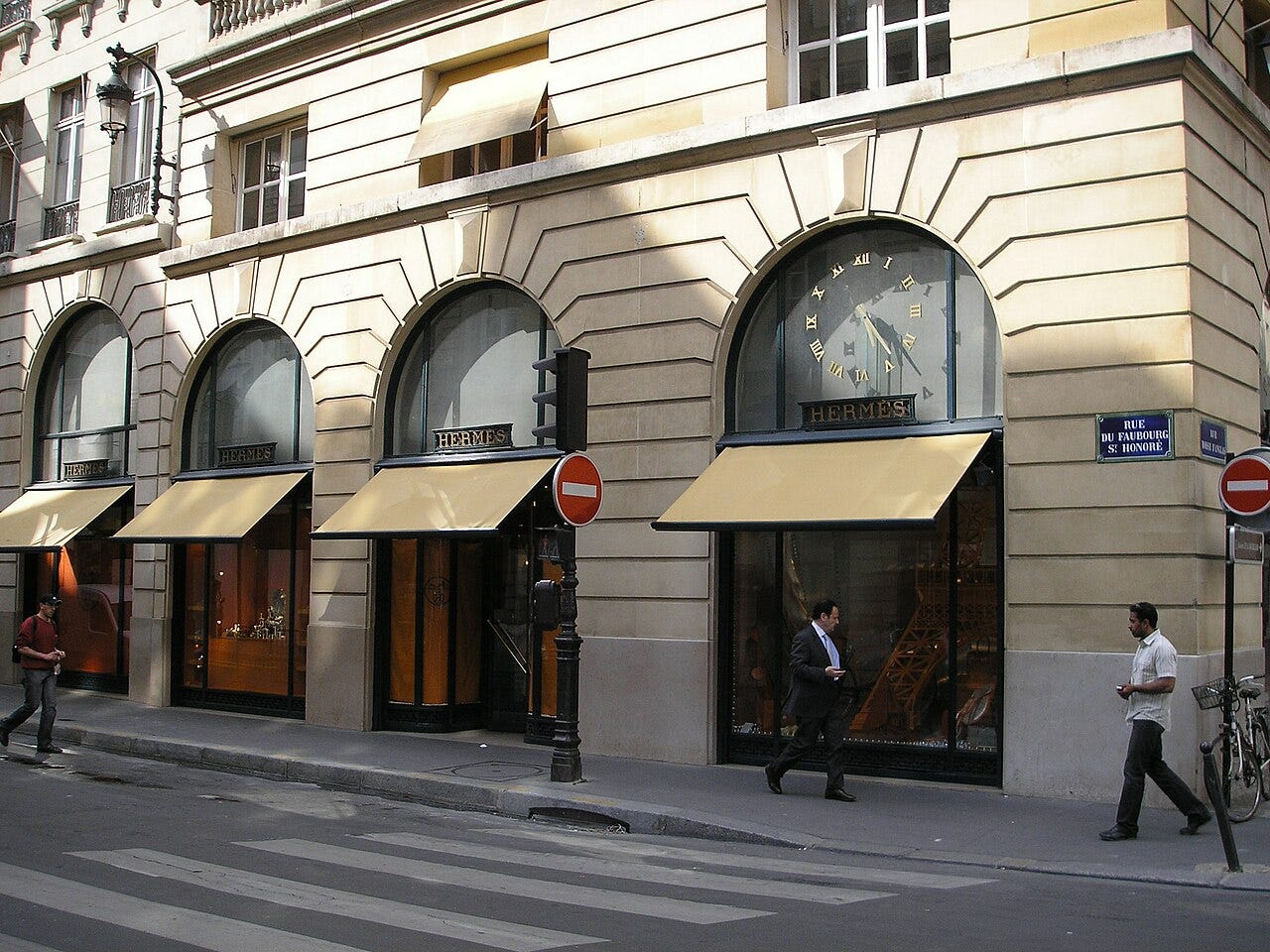
“The rue du Faubourg Saint-Honoré is where the French presidential residence is. It’s where the British embassy is. It is where French Vogue is today, probably because Hermès is there and because all the other luxury flagships are there.”
When Charles-Emile retired in 1902, his sons Adolphe and Emile-Maurice, known as Emile, took the reins. The brothers, who had apprenticed in the family business just like their father and grandfather, changed the company name to Hermès Frères, or Hermès Brothers.
Emile, the younger of the two, was the more ambitious and adventurous sibling. In the late 1890s, he set off to Russia with a suitcase full of miniature Hermès saddles and harnesses. Through sheer charisma and determination, he managed to secure the Tsar of Russia as a client, leading to a significant expansion of the business.
“There’s this great story that in the late 1890s, before his father Charles-Emile retires, the young Emile sets off to conquer Russia for Hermès. He literally gets on a train with a notebook and a suitcase filled with miniature versions of the saddles and the harnesses that Hermès makes. He finds his way into the Tsar of Russia’s court and lands him as a customer.”
This expansion into Russia wasn’t just a business coup; it was a testament to the global appeal of Hermès’ craftsmanship. To put the scale of this into perspective - the company had to set up a new atelier with 80 craftspeople just to fulfil the Tsar’s orders.
It is 1900, the 20th century had dawned, and the Hermès brothers introduced a new product that would prove to be a turning point for Hermès: the Haut à Courroies bag. Designed to carry saddles and riding boots, this high-belted bag was an accessory to the equestrian business. Little did anyone know that it would eventually evolve into the iconic Birkin and Kelly bags of today.
“They say, great, we can help you with this. They introduce the Haut a Courroies bag, which translates as the high belted bag to carry saddles and boots for their clients.”

The Automobile Age and American Inspiration
Back to Table of Contents
In 1916, during World War I, Emile Hermès was sent to the United States as a French military officer to learn about American industrial and military production. This trip would have a profound impact on the future of Hermès. Emile met with Henry Ford and witnessed firsthand the power of an assembly line. He saw the Model T rolling off the production line every three minutes, and he knew that the world was about to change forever.
“My grandfather,” says Jérôme Guerrand, the chairman of the Hermès supervisory board and a cousin of Jean-Louis Dumas’s, “during the war was sent as an officer to the States, and he met [Henry] Ford. At that time it was the best example for factories in the world. And in Canada he found a kind of zip, for the [canvas] roof of the cars. He thought it was something he could use in France—to make other things.” - Vanity Fair
While Emile was impressed by the efficiency of Ford’s production methods, he didn’t adopt them wholesale. Instead, he took elements of the assembly line concept and applied them to Hermès’ production process, but always within the context of maintaining the company’s commitment to handcrafted, artisanal production. This balance between efficiency and craftsmanship would become a hallmark of Hermès’ approach to manufacturing.
Emile also discovered another American innovation during his trip: the zipper. He was so impressed by this new fastening device that he tracked down the inventor and secured an exclusive license to use it in France for two years. Hermès would go on to create the first zippered jacket, a leather golf jacket for the Duke of Windsor. For years afterwards, the zipper was known as the fermeture Hermès or “Hermès fastener” in France.
“He obtains an exclusive license for two years in France. This literally is like the Novo Nordisk episode. He brings it back to France and makes the first zippered products. He makes the first zippered jacket ever created anywhere in the world. It is a leather golf jacket for the British Duke of Windsor, the heir to the throne.”
The most significant takeaway from Emile’s American trip was definitely the realisation that the automobile was the future. He knew when the war ended, the car would replace the horse as the primary mode of transportation, and Hermès needed to be ready to capitalise on this looming shift.
Émile-Maurice's innovative spirit and grand ambitions for the company’s future led to a rift with his older brother Adolphe. More conservative perhaps, Adolphe wanted to remain focused on the traditional equestrian market, resistant to the changes brought by the automobile age. This disagreement came to a head in 1919 when Émile-Maurice bought out his brother, taking full control of the company. Legend has it that he then gathered the craftsmen in the atelier above the shop and posed a pivotal question: “What can we make with our hands here that will interest our clients today?”
This moment set the stage for Hermès’ transition into a new era.
The Roaring Twenties and the Birth of the Handbag
Back to Table of Contents
The timing of Émile-Maurice’s vision could not have been more fortuitous. The 1920s ushered in an age of unprecedented mobility and luxury for the global elite. Improvements in automobiles, trains, and ships made international travel more accessible than ever before. The wealthy were no longer confined to their local spheres; they were jetting off to exotic places and rubbing shoulders with elites from around the world. This new lifestyle created a demand for luxurious, well-crafted luggage and accessories - a niche which our friends at Hermès were perfectly positioned to fill.
In 1922, responding to his wife’s complaint that the Haut à Courroies bag was too large to fit through car doors, Hermès introduced a smaller version designed specifically for automobiles. This move around 1925, effectively launched Hermès’ handbag business, formally marking the company’s evolution from equestrian outfitter to purveyor of luxury accessories. The brand’s elite craftsmanship, which had once adorned horses and carriages, now graced the interiors of luxury automobiles and the hands of international travelers.
Throughout the 1920s, under the leadership of Emile, Hermès expanded its offerings to include clothes, jewellery, and watches. The company also began opening stores in resort destinations where their wealthy clients vacationed, a strategy that continues to this day.
“The legend has it that they added clothes because a long time client came in and said, I am fed up with seeing my horse better dressed than me. Who knows if that’s true, but it’s a nice story. But they really go into this. In this modern world where the global wealthy, the global elite, are traveling, they’re seeing each other, what outward signifiers can they supply them? [Initially] Clothes, in 1927 they had jewelry, in 1928 they had watches.”
As Hermès grew beyond its equestrian roots, the company began to expand its offerings through collaborations with expert craftspeople in various fields. Rather than simply licensing products, Hermès worked closely with specialists such as watchmakers to create unique items that bore the Hermès stamp of quality and design. This strategy allowed the company to maintain its reputation for craftsmanship while venturing into new product categories, deftly balancing its roles as craftsman, manufacturer, designer, and retailer.
The Hermès Museum
Back to Table of Contents
This is a tangent which wasn’t included in the podcast, but I thought was worth including.
A hidden gem within the Hermès empire is their private museum, located on a floor above the flagship store on Rue du Faubourg Saint-Honoré. This museum, once Émile-Maurice Hermès’ office, supposedly houses a remarkable collection; As a testament to their rich history and a source of inspiration for future generations.
The museum, with its oak-paneled walls and moss-green velvet curtains, is a treasure trove of artifacts from the “golden age of the horse.” Émile-Maurice, an avid collector from the age of 12, filled this space with an eclectic array of items: bejeweled saddles, exotic bridles, miniature carriages, and even a tricycle horse that once belonged to Napoleon III’s son. The collection spans cultures and centuries, providing a tangible link to Hermès’ equestrian roots.
The museum is far more than a static display of historical objects. As Ménéhould de Bazelaire, the museum’s curator since 1986, explained to Vanity Fair, it serves as a vital source of inspiration for all Hermès’ designers and artists. They come to the museum not to be “prisoners of the past,” but to draw energy and ideas from the exquisite highlights of history on display. The collection acts as a creative catalyst and a conscience for every designer, ensuring that even as Hermès innovates, it remains true to its heritage of god-tier quality and attention to detail.
Hermès’ foray into watchmaking
Back to Table of Contents
This section also wasn’t included in the podcast, but was defintely worth exploring a little more, given this is a watch related blog!
The story begins in 1912 with an anecdote involving Jacqueline Hermès, then a nine-year-old girl and granddaughter of Émile Hermès. Her father, noticing her energetic nature and tendency to lose her pocket watch, devised a solution: he created a leather strap and case to secure the watch to her wrist. This ‘improvised wristwatch’ (above) marks the humble beginnings of Hermès’ watchmaking journey.
As the automobile began to replace horse-drawn carriages after World War I, Émile Hermès once again displayed adaptability. Faced with the decline of their original harness-making business, he sought new applications for their leatherworking skills, which inevitably led to a focus on travellers’ needs, which included timekeeping.
In 1928, Hermès sold its first branded watch from the Faubourg Saint-Honoré boutique. The “Ermeto” was produced in collaboration with Swiss watchmaker Movado, and it was an elegant handbag watch housed in a sliding leather case. This was followed by bespoke creations like a belt buckle watch made for Umberto II of Italy in 1945.
Over the years, Hermès expanded its watch offerings through partnerships with renowned Swiss watchmakers such as Jaeger-LeCoultre, Universal Genève, and Vacheron Constantin. These collaborations allowed Hermès to offer high-quality watches while remaining focused on its own expertise.
Their commitment to watchmaking culminated in the establishment of La Montre Hermès S.A. in Bienne, Switzerland, in 19782.
Coming back to the timeline, we briefly mentioned Hermès expanding their offerings and opening stores in resort destinations, so let’s pick up there. Hermès’ first international store opened in the French Riviera, with others soon following in various resort locations around the world. This approach was primarily aimed at serving their existing French customers as they travelled, while also providing an opportunity to introduce the brand to wealthy international visitors. The strategy differs markedly from their current approach of catering to local clientele in each market - which says a lot about the evolution of both this brand and global luxury consumption patterns.
Note: You’re about halfway through the post!
The Era of Robert Dumas and the Birth of Whimsy
Back to Table of Contents
As Émile-Maurice Hermès approached the end of his tenure, the question of succession arose. Émile had four daughters, one of whom tragically died young. In keeping with the social norms of the early 20th century, leadership of the company passed not to his daughters but to his sons-in-law. This transition brought new blood into the company and introduced three family names that would become integral to the Hermès legacy: (Robert) Dumas, (Jean-René) Guerrand, and (Francis) Puech. These names would become synonymous with the fourth generation of Hermès3.
Among these sons-in-law, Robert Dumas would prove particularly influential in shaping the future of Hermès, working in close collaboration with his brother-in-law Jean-René Guerrand. While maintaining the commitment to elite craftsmanship, Dumas would introduce a new element that would become a defining characteristic of the Hermès brand: a sense of whimsy and artistic flair. This injection of playfulness and creativity would help transform Hermès from a maker of fine leather goods into a true luxury icon, capable of capturing the imagination of clients around the world.
In the 1930s, Robert Dumas began to make his mark on the company. Dumas brought a new sense of whimsy and playfulness to Hermès, which had previously been known primarily for its technical excellence and traditional craftsmanship.
“What we haven’t talked about yet and what Hermès at this point certainly is not is this element of whimsy and art that is really, really critical, I think, to the company.”

One of Dumas’ first innovations was the redesign of the smaller Haut à Courroies bag into the Sac à Dépêches (today: the Kelly Bag). This sleek, trapezoidal bag would later become the iconic Kelly bag. Dumas also introduced the Chaîne d’Ancre bracelet, inspired by the anchor chains he saw on a foggy beach in Normandy.
“Robert is walking along the beach in Normandy one day, and he’s just inspired by the scene of these boat anchors on this foggy beach, so he makes a little sketch in his notebook. He plays with it, and then he decides he’s going to turn this into a bracelet.”
Dumas’ most enduring contribution to Hermès was probably the silk scarf. Introduced in 1937, these colourful, whimsical squares quickly became a major part of the business. The first design, based on a woodblock engraving by Dumas himself, featured a game of omnibus and ladies in white. The scarves were an instant hit with Hermès’ clientele.

The Hermès silk scarf quickly became a cornerstone of success. Initially embraced as part of the quintessential French woman’s wardrobe, these scarves soon gained international acclaim, thanks in large part to an unexpected ambassador: Queen Elizabeth II of England. From the 1940s onwards, the young queen was frequently seen wearing Hermès scarves as headscarves, a practice she continued throughout her 70-year reign. This royal endorsement catapulted the Hermès scarf to global fame, transforming it from a French fashion staple to an international symbol of elegance and refinement. The juxtaposition of these whimsical, playful designs adorning the head of the British monarch perfectly encapsulated the Hermès brand – at once prestigious and playful, traditional yet innovative. For decades, until the 1990s, these silk scarves were the backbone of Hermès’ business. Here’s the all time bestseller4:

“They are first sourcing the finest silk that they can find, which is now from their owned farms in Brazil. That’s where the silk comes from. Only 20 new designs are created every year and they retire old designs. There's a Disney vault aspect to this.
The pipeline to get a new design into the customers hands is two years. You might be asking yourself, come on, why is this taking two years? That's a ridiculous thing. Here is the process: They screen print every single scarf by hand.
Every single colour of the scarf is screen printed using its own mask, or basically a stencil. If your scarf has 20 colors, it has at least 20 masks that they then squeegee the ink over, and the precision is perfect.”
The introduction of the silk scarf was a masterstroke. It allowed Hermès to offer a more accessible luxury item while maintaining its high-end reputation. The scarves became a canvas for artistic expression, with each design telling a story or capturing a moment in time. This blend of art and fashion would become a defining characteristic of the Hermès brand.
Dumas also brought a new focus on window displays, hiring former theatre set designers to create elaborate, dreamlike scenes in the windows of the Faubourg Saint-Honoré store. These displays, which often featured little to no actual Hermès product, were more like art installations, transporting passersby into a world of luxury and imagination.
The Hermès orange, now an iconic symbol of the brand, has a fascinating story of its own. Originally adopted out of necessity during World War II when cream-colored boxes were unavailable, the orange hue has since become a cornerstone of Hermès’ visual identity. The company’s relationship with this colour goes beyond a simple trademark. While Hermès has indeed selected a specific, non-Pantone orange as its signature shade, the brand’s approach to ‘owning’ orange is far more nuanced and playful. Recognising that different leathers absorb dye differently, Hermès embraces the subtle variations in how their signature orange presents across their range of products. Furthermore, the company has expanded its palette to include several other orange hues, such as ‘feu’ (fire), ‘sanguine’ (a lava-like red-orange), and ‘moutarde’ (mustard). This spectrum of oranges allows Hermès to stay current, adapt to seasonal themes, and continue to assert their dominance over the entire orange color family, even in the face of legal challenges from the EU regarding colour ownership.

Then there’s the Hermès logo, introduced by Robert Dumas after World War II. This is another masterstroke of brand identity. Rather than opting for a more obvious equestrian symbol like a galloping horse, Dumas chose to depict a horse-drawn carriage with a groom, inspired by the 19th-century painting “Le Duc Attelé, Groom à l'Attente” (Hitched Carriage, Waiting Groom). This choice was nothing short of genius. By selecting the carriage as their emblem, Hermès firmly anchored its brand in a specific historical context – one that no modern competitor could claim.
The logo serves as a constant reminder of their origins and its participation in an era that now exists only in nostalgic memory. It is a visual representation of Hermès’ inimitable heritage, a durable asset that sets the brand apart in the luxury market. The carriage logo encapsulates Hermès’ essence: a brand deeply rooted in history yet always moving forward.
The Birth of Icons: Grace Kelly and the Kelly Bag
Back to Table of Contents
We move to the 1950s, and Hermès’ reputation for luxury had reached new heights, thanks to a chance encounter with royalty. Grace Kelly, the American actress who had become Princess of Monaco, was photographed using her Sac à Dépêches to shield her pregnancy from paparazzi. The image, which appeared in Life magazine, sparked a frenzy for the bag.

In 1956, Princess Grace Kelly of Monaco, this is a girl from Philadelphia, an American girl who goes on to become a movie star, who then goes on to become Princess Grace of Monaco. I can’t imagine a bigger dream for any woman or any person in the 1950s. She is photographed using the Sac a Depeches in Life magazine.
You’ll note two different images above - it remains unclear to me, what the correct image is, but whether it was on the cover or just featured prominently, the impact of Grace Kelly using the bag was undeniable. She captured the public’s imagination, linking Hermès with the glamour and mystique of royalty.
In 1977, Robert Dumas officially renamed it the Kelly bag in honour of the princess.
“One of the last things that Robert does right before he retires in 1977 is he officially changes the product name of the Sac a Dépêches to the Kelly bag.”
The Kelly bag’s popularity marked a shift in Hermès’ business. While leather goods had always been a part of the company’s offerings, they had taken a backseat to equestrian equipment and silk scarves. Now, handbags were moving to the forefront, and Hermès was poised to become a major player in the luxury accessories market.
It’s worth noting that the Kelly bag, despite its royal association, was not an overnight success. When it was first introduced in the 1930s, it was priced at around $900, equivalent to $10,000-$12,000 today. This high price limited its appeal initially, but it also set the stage for Hermès’ future positioning as an ultra-luxury brand.
Challenges and Transformation: The Jean-Louis Dumas Era
Back to Table of Contents
Jean-Louis Dumas, who took the reins of Hermès in 1978, faced a company at a crossroads. Despite its storied history and reputation for quality, Hermès was struggling to remain relevant in a rapidly changing luxury market. Dumas, however, brought a unique perspective that would prove transformative for the company.
Unlike his predecessors, Dumas had significant international experience. He had spent time in America, following his wife Rena (who would later become a world-renowned architect) during her internship with I.M. Pei in New York. During this period, Dumas worked at Bloomingdale’s, gaining invaluable insight into the American retail landscape and consumer behaviour.
This experience in America proved crucial. It allowed Dumas to understand the strategies of other luxury brands and the suggestions of consultants who were pushing for modernisation. Rather than completely overhauling Hermès, Dumas chose a more nuanced approach instead. He sought to make Hermès relevant to a new generation but still prioritise the preservation of its core values and craftsmanship.
“From that experience being in America, being in this much more mainstream audience, he comes to understand what these other brands are doing, what the consultants are suggesting, but he takes that back. He says, look, the way forward is we’re going to figure out how to make Hermès relevant. We’re not going to throw away everything we’ve done.”
Dumas’s strategy was epitomised by his first major initiative in 1979: a revolutionary advertising campaign featuring young Parisian women wearing Hermès scarves in unconventional ways, often paired with jeans. This campaign, shocking to some within the company, brilliantly repositioned Hermès products as both classic and contemporary. It allowed Hermès to coexist with current fashion trends without compromising its identity.
As Dumas himself put it, “The young customers came to us more than we went to them. People saw again, but with a new eye, the beauty of materials worked by fine hands. They came, we followed.” This approach allowed Hermès to attract a younger clientele without alienating its traditional customer base.
Beyond product positioning, Dumas recognised the expanding global market for luxury goods. Following in the footsteps of Louis Vuitton’s Henry Racamier, he understood that the pool of potential Hermès clients had grown exponentially since the 1950s. This led to a strategic international expansion, with Hermès following its clientele to new markets as wealth spread globally.
Dumas’s crowning achievement came in 1984 with the creation of the Birkin bag, which we will dig into soon. Unlike the Kelly bag, which evolved organically, the Birkin was a deliberate creation. Inspired by a chance encounter with actress Jane Birkin on a flight, Dumas designed a bag that would become one of the most coveted luxury items in the world.
Under Dumas's leadership, Hermès successfully navigated the transition from a traditional family business to a global luxury powerhouse. He managed to modernise the company and expand its reach while maintaining its commitment to craftsmanship and quality. By the time he retired in 2006, Dumas had transformed Hermès into a true icon of the luxury world, with annual revenue growth from around 50 million euros when he took over, to 1.51 billion euros when he was done; a 30-fold increase!
The Value of Craftsmanship: A Culture of Excellence
Back to Table of Contents
At the heart of Hermès’ enduring success lies a unique corporate culture that sets it apart from other luxury brands. This culture, deeply rooted in craftsmanship and tradition, is the cornerstone of Hermès’ identity and a key driver of its continued relevance in the luxury market.
Jean-Louis Dumas, when he was CEO and artistic director, often likened the company to “peasants working the land to yield fruit” - a sentiment passed down from his mother, Jacqueline. This metaphor encapsulates both the sense of stewardship each generation feels towards the company and the dignity they find in hands-on craftsmanship. Hermès is not merely a design house, but a culture unto itself - a rarefied world with its own values and traditions.
At the core of this culture is the iconic saddle stitch, a technique that epitomises Hermès’ commitment to quality. This method, used on every Hermès bag, involves two needles working with a single thread, creating an interlocking mechanism that provides superior strength and durability5. The creation of a single Kelly bag involves one artisan working with 36 carefully selected pieces of leather over approximately 20 hours, spread across several weeks!
Each artisan, trained over five years, works with time-honoured tools - awls, mallets, needles, knives, and stones - in the way of their predecessors. It takes an artisan two years of training before they are allowed to create their first bag, and often several more years before they are entrusted with crafting the iconic Birkin or Kelly models. This extensive training period ensures the transmission of expertise, or “savoir-faire,” from one generation of craftspeople to the next.
Remarkably, Hermès’ commitment to its craftspeople extends beyond active employment. Retired workers don’t truly leave Hermès; instead, they join the “Club des Anciens” - The Ancients. This group, meeting monthly and taking yearly trips, serves as a living repository of company history and wisdom. In this way, Hermès preserves its heritage not just through its products, but through its people.
Their dedication to craftsmanship is further evidenced by its after-sales service. Hermès operates 15 dedicated repair shops worldwide, mending around 120,000 pieces annually. This practice, instituted by Jean-Louis Dumas, embodies the true essence of luxury according to Hermès - the ability to repair and preserve their creations indefinitely.
Today, Hermès employs around 7,000 artisans, effectively preserving a craft that might otherwise have vanished in the face of industrialisation. While there are independent craftspeople producing similar high-quality goods, their numbers are limited, making the sheer scale of Hermès’ operation all the more remarkable.
This unique approach to craftsmanship and corporate culture creates a magnetic pull that even draws family members with advanced degrees in other fields back to their roots in leather, silk, and the iconic saddle stitch. It is this commitment to excellence, passed down through generations, that continues to set Hermès apart in the luxury market and ensures its products retain their soul - A tangible connection to the artisan who created them.
The Birkin Bag: A Happy Accident
Back to Table of Contents
In 1981, Jean-Louis Dumas was seated next to actress and singer Jane Birkin on a flight from Paris to London. Birkin was struggling to fit her straw bag into the overhead compartment, and her belongings spilled out onto the floor. She complained to Dumas that it was difficult to find a leather weekend bag that she liked.
“As they sit down, and they start talking on the flight. Jean-Louis introduces himself. He’s like, I noticed you’re struggling with your wicker basket there Miss Birkin … As they get to talking, they're talking about the Kelly. She’s like, look, Kelly’s the Kelly, but I can’t wear it over my shoulder. Jean-Louis starts sketching out designs on the plane, and voila. The Birkin is born.”
Dumas, ever the entrepreneur, saw an opportunity. He sketched a design for a spacious, rectangular bag with two handles and a burnished flap with pockets. Birkin approved, and the Birkin bag was born; Larger than the Kelly, with two handles for easier carrying, and a more casual yet still luxurious aesthetic.
For Jane Birkin, she was this next generation. She was an actress, both in film and theater. She was a singer. She was incredibly beautiful. She was the It girl, but in a very, very different way than Grace Kelly, she wore jeans. In particular, she had a trademark accessory fitting with the 1970s.
Interestingly, the Birkin was not an instant success. It took around five years for it to gain traction, which Dumas attributed to the fact that Hermes was still in the process of becoming a globally recognised luxury brand. Once the Birkin took off, it became a cultural phenomenon, with waiting lists that stretched for years and prices that reached into the hundreds of thousands of dollars.
“It takes about five years before the Birkin bag becomes the Birkin bag. The time is right. We’re in the 1980s, the go-go years.”
The Allure of Scarcity
Back to Table of Contents
As the Birkin and Kelly bags grew in popularity, Hermès developed a reputation for scarcity. Long waiting lists and limited availability only fuelled desire for these coveted accessories. This scarcity, whether by design or due to production constraints, became a key part of the Hermès mystique.
“There’s a real lore around it that it’s hard to get. It’s just like with a kid. If you tell them they can’t have something, they wanted a lot more.”
By the early 2000s, the Birkin’s cultural cachet had reached such heights that it featured prominently in popular media, including a famous episode of Sex and the City. This exposure introduced the brand to a wider audience, further cementing its status as the ultimate luxury handbag.
This scarcity, whether real or perceived, only adds to the desirability of Hermes products. It’s not uncommon for Birkins and Kellys to sell for far above their retail prices on the secondary market, as collectors and fashion enthusiasts’ clamour to get their hands on these elusive status symbols.
The Birkin bag’s status as a luxury icon is matched only by its reputation as an investment asset! A 2016 study comparing the investment potential of Hermès Birkin bags to the S&P 500 and gold over a 35-year period revealed some startling insights. While the S&P 500 offered a real return average of 8.65% and gold actually saw a negative real return of -1.5%, Birkin bags demonstrated an average annual increase in value of 14.2%.
Most remarkably, unlike the stock market or gold prices which experienced significant fluctuations, the value of Birkin bags never decreased, showing consistent year-on-year growth. This steady appreciation, peaking at a 25% increase in 2001, has all but cemented the Birkin’s reputation not just as a fashion statement, but as a remarkably stable and lucrative investment opportunity; Bear in mind, the thought that people weren’t buying his bags to use, but to profit from them, would probably make Dumas’ turn in his grave!
The Arnault-Hermès Saga: A Battle for the Luxury Crown Jewel
Back to Table of Contents
Let’s skip ahead to cover this epic saga before we tackle the transition to the sixth generation. In 2010, the luxury world was rocked by a revelation that would spark one of the most dramatic corporate battles in French business history. Bernard Arnault, the chairman of LVMH, had secretly amassed a large stake in Hermès.
“Finally, in October of 2010… Arnault is patient. He’s been patient. In October 2010 LVMH exercises its options on the equity swaps that it owns and announces that it had now controls 14.2% of Hermes shares.”
The Stealth Acquisition
Arnault’s strategy was masterful in its execution. Starting in 2001, he began quietly acquiring Hermès shares through financial instruments called equity swaps. These derivatives allowed LVMH to build a significant position without triggering legal disclosure requirements. By the time Hermès discovered the manoeuvre, LVMH had already secured a substantial foothold.
The Hermès Family's Reaction
The revelation sent shockwaves through the Hermès family. They viewed Arnault’s move as a hostile attempt to take over their beloved company. Patrick Thomas, then-CEO of Hermès, famously quipped, “If you want to seduce a beautiful woman, you don't start by raping her from behind!”
The family, comprising around 70 members across several branches, quickly mobilised to defend their empire. They were determined to prevent Arnault from gaining control, fearing he would industrialise their artisanal processes and dilute the brand’s exclusivity.
Legal Battles and Public Spats
What followed was a series of legal challenges and public denouncements. Hermès filed a criminal complaint against LVMH, accusing the conglomerate of insider trading and share price manipulation. LVMH, in turn, filed a defamation suit against Hermès.
The conflict played out in the media, with both sides trading barbs. Arnault maintained that his intentions were friendly, while the Hermès family remained steadfastly opposed to any LVMH involvement.
The Formation of H51
In a decisive move to protect their independence, the Hermès family created a holding company called H51 in December 2011. This entity grouped together 50.2% of Hermès shares, effectively giving the family majority control and making a hostile takeover virtually impossible. Specifically:
52 family members contributed their shares to the holding company.
The shares were locked up for 20 years, with very limited exit possibilities.
H51 gave first right of refusal on any shares sold by family members outside the structure.
This move was a masterstroke, as it guaranteed family control while still allowing Hermès to remain a publicly-traded company.
The Resolution
The saga came to an end in 2014 when a French court ordered LVMH to distribute most of its Hermès shares to its own shareholders. This reduced LVMH’s direct stake in Hermès to around 8.5%, with Arnault personally retaining a 5% stake through his family holding company.
Despite the acrimonious nature of the conflict, Arnault ultimately profited handsomely from his investment. The value of Hermès shares had more than doubled during the period of his involvement. You might recall from the LVMH essay referencing the battle for Gucci, there is a perfect quote to capture Arnault’s business acumen:
“Which led Domenico De Sole to remark [about Arnault]: even when he loses, he wins.”
The Aftermath
The battle reinforced Hermès’ commitment to independence and solidified the family’s control. It also led to changes in French financial regulations, closing the loophole that had allowed Arnault to build his stake secretly.
For Hermès, the episode was a wake-up call. It prompted the company to tighten its defenses and reaffirm its unique business model. The creation of H51 ensured that Hermès would remain under family control for at least another generation, preserving its distinct culture and artisanal approach in an increasingly consolidating luxury market.
The Modern Era: Challenges and Innovations
Back to Table of Contents
As Hermès entered the 21st century, it faced new challenges that would test its ability to adapt while maintaining its core values. The transition to the sixth generation of family leadership marked a critical juncture for the company, presenting both challenges and opportunities.
Generational Transition
The passing of the torch from Jean-Louis Dumas to the sixth generation was not a sudden event, but a carefully orchestrated process. Jean-Louis, who had led the company since 1978, began to step back from day-to-day operations in the early 2000s due to health issues. This gradual transition allowed for a smooth handover of responsibilities.
Pierre-Alexis Dumas, son of Jean-Louis, joined the company in 1992 and was appointed artistic director in 2009. His cousin, Axel Dumas, joined Hermès in 2003, initially working in the finance department before taking on increasingly senior roles. Axel became CEO in 2013, marking the official transition to sixth-generation leadership.
This generational shift coincided with significant changes in the luxury market. The rise of digital technology, the increasing importance of emerging markets (particularly China), and growing concerns about sustainability all presented new challenges for the traditional luxury house.
Preserving Heritage While Embracing Change
One of the primary challenges for the new leadership was to modernise the company while preserving its unique heritage and craftsmanship-focused culture. Pierre-Alexis and Axel had to navigate this delicate balance, updating Hermès’ approach to meet contemporary consumer expectations without compromising the brand's core values.
For instance, they invested in digital initiatives, launching a revamped e-commerce platform in 2017, but were careful to maintain the brand’s exclusive image by limiting which products were available online. They also introduced innovative products like the Apple Watch Hermès, a collaboration that merged high-tech functionality with Hermès’ legendary leather craftsmanship.

“We had an incredible talk with Jonathan Ive, and there was a lot of mutual admiration and common values. From that, we said, wouldn't it be nice to have something combining our craftsmanship, our vision? It was about trying to make a contemporary, elegant object. It was not a master plan of global domination.”
Axel Dumas on the Apple Watch collaboration
Expanding Global Reach
Expanding Hermès’ global presence was a significant challenge, particularly in Asia. The new leadership recognised the immense potential of the Chinese market but had to find ways to grow without diluting the brand’s exclusivity.
They adopted a strategy of carefully controlled expansion, opening new stores in key locations and investing in training local staff to provide the signature Hermès experience. By 2020, Asia Pacific (excluding Japan) had become Hermès’ largest market, accounting for nearly 50% of sales.
Maintaining Independence
Perhaps the most dramatic challenge faced by the sixth generation was defending Hermès’ independence against LVMH’s attempted takeover between 2010 and 2014. This battle, which we discussed earlier, required strategic thinking and family unity.
The creation of the H51 holding company, which grouped together over 50% of Hermès shares, was a masterstroke that effectively safeguarded the company’s independence. This move, initiated by the sixth generation, demonstrated their commitment to maintaining Hermès’ unique culture and business model.
Investing in Craftsmanship
Recognising that Hermès' artisans were its greatest asset, the new leadership doubled down on investments in training and recruitment. They established the École Hermès des Savoir-Faire in 2021, formalising their commitment to preserving and passing on traditional craft skills.
They also continued the strategy of decentralised production, opening new workshops across France rather than consolidating production in large factories. This allowed Hermès to increase production capacity while maintaining its artisanal methods and quality standards.
Embracing Sustainability
The sixth generation also had to grapple with increasing consumer and regulatory focus on sustainability. They initiated a comprehensive sustainability strategy, investing in responsible sourcing (alligator farms), developing innovative materials (mushroom-based leather alternatives), and increasing transparency about the company’s environmental and social impact6.
Results of the Transition
The results of this generational transition have been impressive. Under sixth-generation leadership, Hermès has continued to outperform the luxury sector in terms of growth and profitability. Between 2010 and 2020, revenue more than tripled, from €2.4 billion to €6.4 billion, while maintaining industry-leading profit margins.
More importantly, Hermès has managed this growth while preserving its unique identity and values. The company remains committed to its artisanal production methods, maintains its policy of controlled scarcity for its most iconic products, and continues to be seen as the pinnacle of luxury.
As Axel Dumas noted in a 2019 interview:
“Every decision that we make has got some trade-off. There's something I really like about strategy in Michael Porter. Strategy is accepting that you are doing something better than the other, and the other is doing something better than you. You have to pick your fight.”
This strategic clarity, balancing tradition with innovation, craftsmanship with global expansion, and exclusivity with growth, has been the hallmark of sixth-generation leadership at Hermès. As the company moves further into the 21st century, this ability to navigate complex trade-offs while staying true to its core identity will likely remain crucial to its continued success.
The Hermès Production Model
Back to Table of Contents
One of the biggest challenges Hermes faces in the modern era is balancing growth with exclusivity. As the global appetite for luxury goods continues to expand, particularly in Asia, Hermes must find ways to meet demand without sacrificing its reputation for rarity and refinement.
“Today. I think we referenced this earlier in the episode, Hermes employs 7000 master craftspeople, artisans. Most of the story that we’ve been telling thus far, until 1992, all of the craftspeople in the company, more or less, were working in the Faubourg in this one relatively small building on the Rue Faubourg du Saint-Honoré in Paris.”
One of the most fascinating aspects of Hermès’ success is its unique production model. Unlike many luxury brands that have outsourced production to cut costs, Hermès maintains a network of workshops across France, each employing no more than 250-300 artisans.
“Today, there are 31 Hermès ateliers, artisan manufacturing facilities all throughout the country, each with no more than 250-300 people in it.”
This approach allows Hermès to maintain quality control while also preserving traditional craftsmanship techniques. The company invests heavily in training new artisans, ensuring that skills are passed down from generation to generation.
The Hermès Paradox: Scarcity in an Age of Abundance
Back to Table of Contents
Perhaps the most intriguing aspect of Hermès’ modern strategy is its continued adherence to the principle of controlled scarcity. In an age where many luxury brands have embraced rapid expansion and aggressive marketing, Hermès has maintained a more restrained approach.
The company deliberately limits production of its most coveted items, particularly the Birkin and Kelly bags. This strategy of controlled scarcity has helped Hermès maintain its position at the pinnacle of luxury. By keeping demand higher than supply, Hermès ensures that its products retain their value and desirability.
"The minute that you are in possession of a Birkin bag, you could immediately sell it for a lot more than what you paid for it."
This approach has proven remarkably successful. Despite its relatively conservative growth strategy, Hermès has consistently outperformed its luxury peers in terms of profitability and stock market performance. In 2022, the company reported a record profit margin of 40.5%, far exceeding its competitors in the luxury sector.
Looking to the Future: Challenges and Opportunities
Back to Table of Contents
As Hermès approaches its 200th anniversary, it faces a range of challenges and opportunities. The rise of new luxury markets, particularly in Asia, presents significant growth potential but also requires careful navigation of different cultural contexts and consumer preferences.
The ongoing digital transformation of retail and the increasing importance of e-commerce pose both opportunities and challenges for a brand that has traditionally relied heavily on the in-store experience. Hermès will need to find ways to translate its unique shopping experience to digital platforms without diluting its brand.
Sustainability will likely continue to be a major focus, with increasing pressure on luxury brands to demonstrate ethical and environmentally responsible practices. Hermès' long-standing commitment to craftsmanship and quality positions it well in this regard, but the company will need to continue innovating in areas such as sustainable materials and production processes.
Finally, as the luxury industry continues to consolidate, with conglomerates like LVMH and Kering dominating the landscape, Hermès’ continued independence makes it something of an anomaly. The company’s ability to resist takeover attempts and maintain family control will likely remain a key part of its strategy and identity.
Epilogue
Back to Table of Contents
The story of Hermès is one of uncompromising continuity amidst constant change. From its origins as a Parisian harness workshop to its current status as a global luxury icon, Hermès has demonstrated an uncanny ability to evolve with the times while staying true to its core values.
The family’s unwavering commitment to craftsmanship, quality, and creativity has allowed it to build a brand that transcends fashion trends and economic cycles. By maintaining a long-term perspective and prioritising the intrinsic value of its products over short-term profit maximisation, Hermès has created a truly unique position in the luxury market.
As Axel Dumas puts it, “We don't want to be the biggest. We want to be the best at what we do.” With that kind of focus and determination, it’s hard to imagine Hermes ever going out of style. It has served Hermès well for nearly two centuries, and as the family looks to the future, they seem well-positioned to continue their legacy of quiet luxury and uncompromising quality for generations to come.
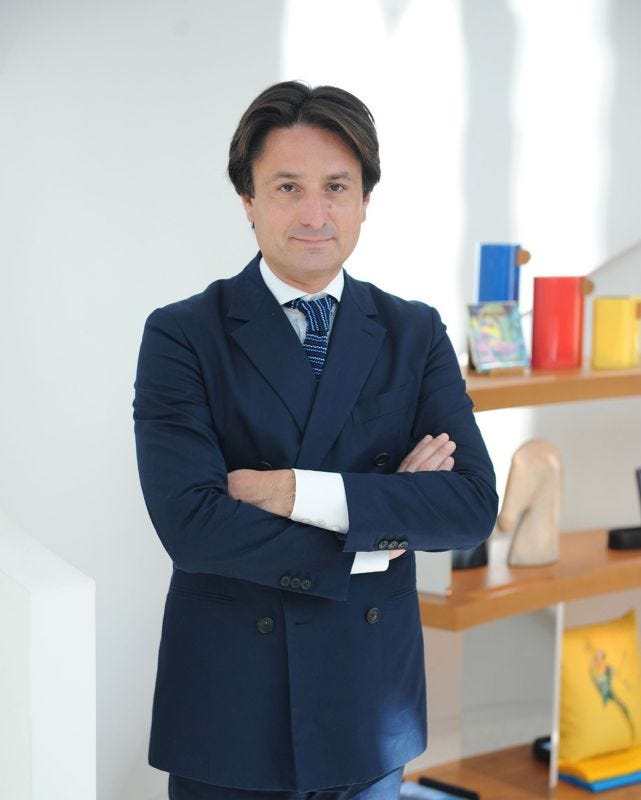
In a world which gets high on rapid change and instant gratification, Hermès stands as a testament to the enduring value of patience, skill, and attention to detail. It is not merely a luxury brand; It is a guardian of a certain art de vivre – a way of life that values beauty, quality, and craftsmanship. As long as these values continue to resonate with discerning consumers around the world, the future of Hermès looks as bright as its iconic orange boxes.

Believe it or not, that “❤️ Like” button is a big deal – it serves as a proxy to new visitors of this publication’s value. If you enjoyed this post, please let others know. Thanks for reading!

An awesome family tree so you can follow along as we go through the generations.
Here’s a separate article worth reading: What Hermès Means To Watch Lovers - you should definitely stop reading once it starts getting into the Apple Watch info! The rest is great!
The story behind the Brides de Gala scarf design - In 1957, Robert Dumas worked with Hugo Grygkar. He placed two bridles face to face on the floor, and immediately it became clear that the composition was perfect, a scarf with unparalleled simplicity came to life. This was followed by the talent of a precise and subtle hand, which is so dear to the Maison. This design reflects the first love of a Maison of saddlers, its attraction to the beautiful, useful, and durable, as well as the enduring legacy of a title whose sounds evoke, as Jean-Louis Dumas once noted, “dazzling ceremonial garments.” The interlaced harnesses feature pieces from the Émile Hermès collection. Objects sometimes have a truly wonderful destiny. Source: Hermès
In July 2015, Birkin asked Hermès to stop using her name for the crocodile version due to ethical concerns, as PETA alleged crocodile farms supplying the hide to Hermès for the manufacture of the bags crammed their animals into barren concrete pits. PETA said: “At just one year old, alligators are shot with a captive bolt gun or crudely cut into while they're still conscious and able to feel pain.” Birkin asked Hermès “to debaptise the Birkin Croco until better practices in line with international norms can be put in place.” Hermès announced soon afterward that it had satisfied Birkin with new reassurances on this. Wikipedia.




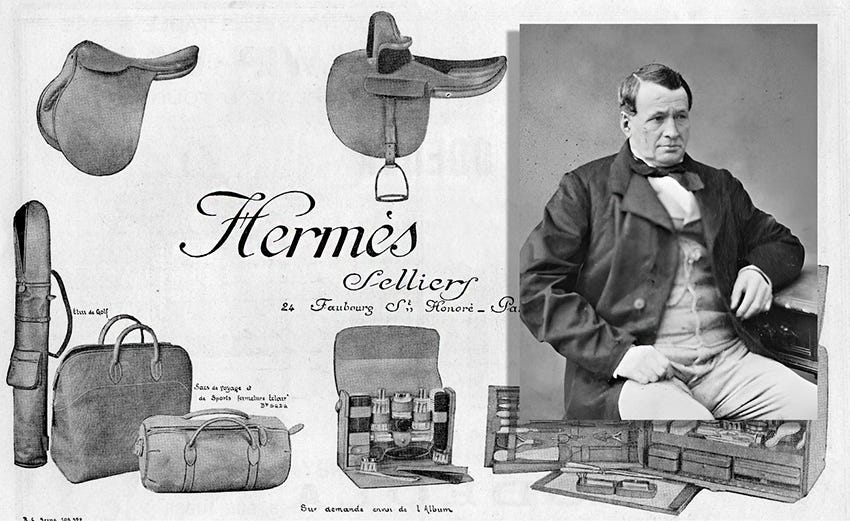
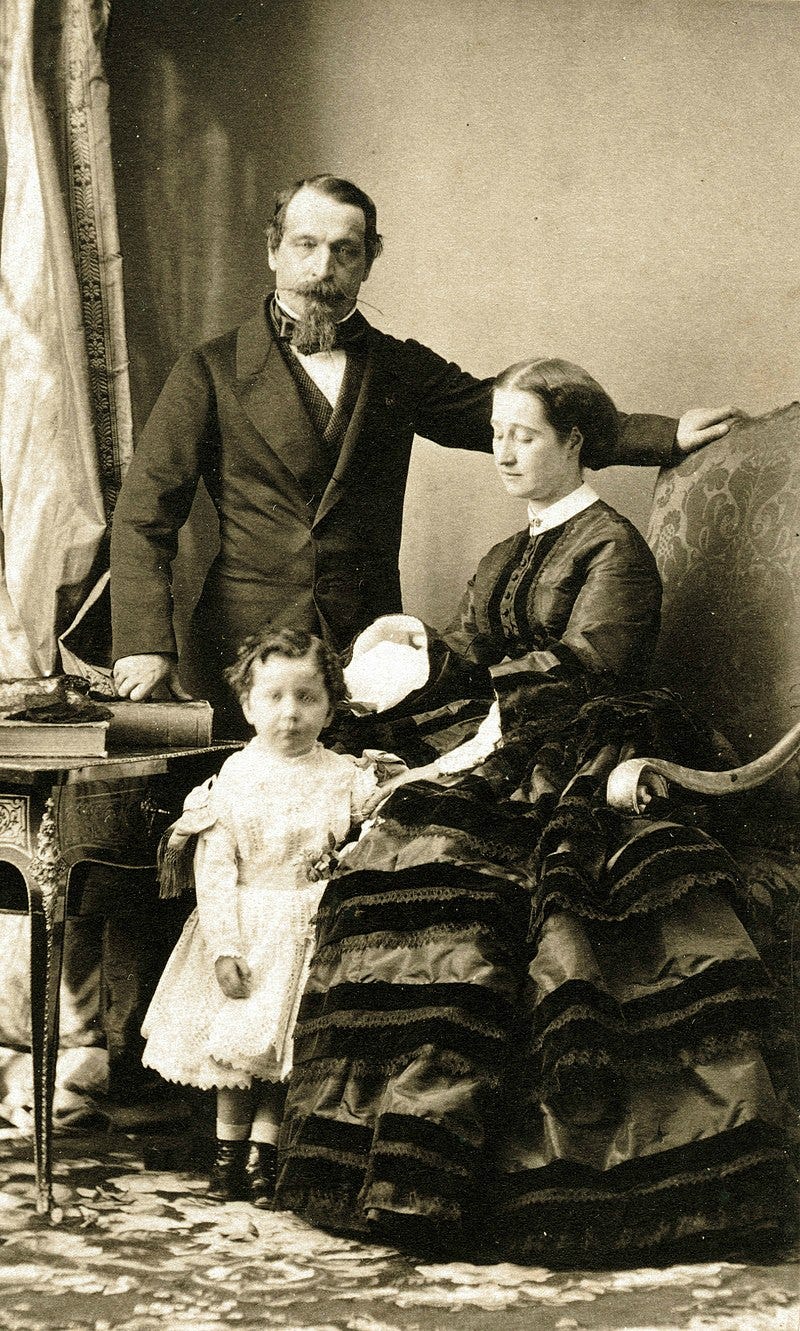

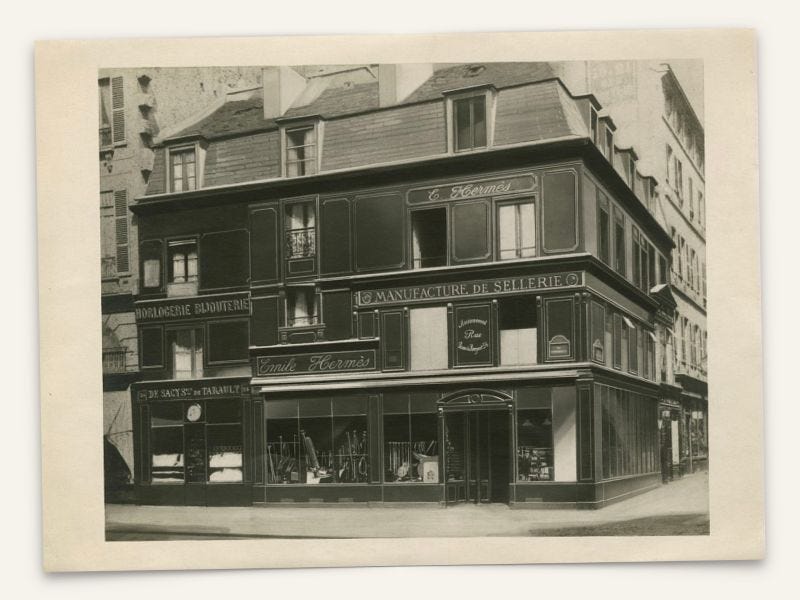




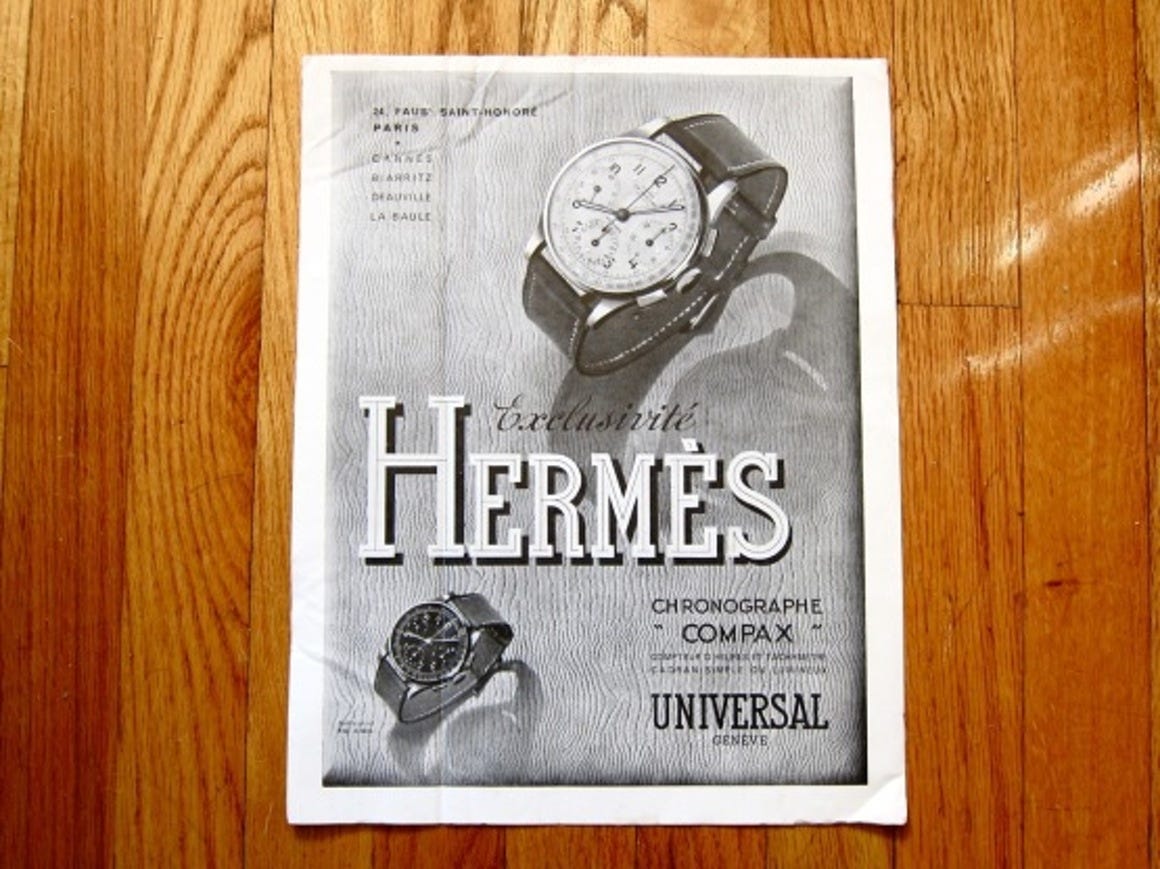
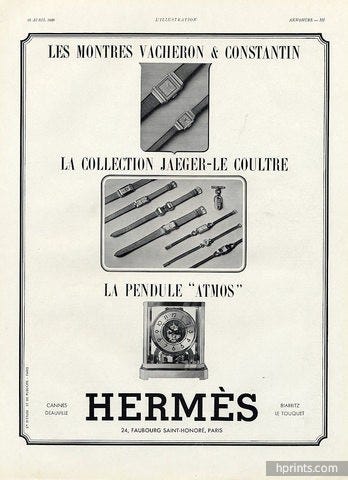


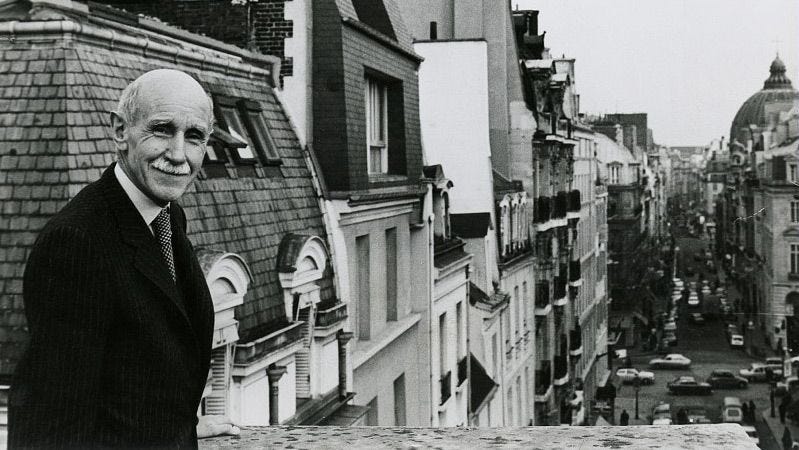


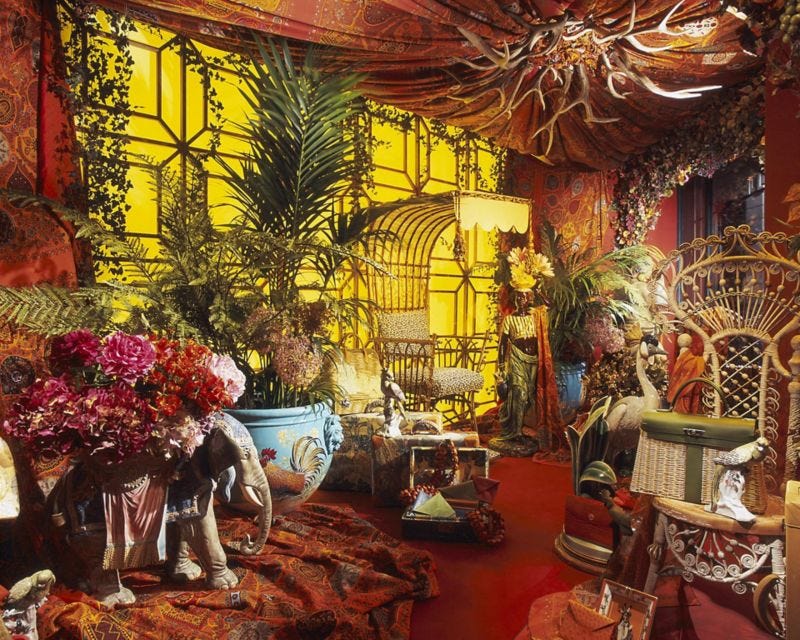

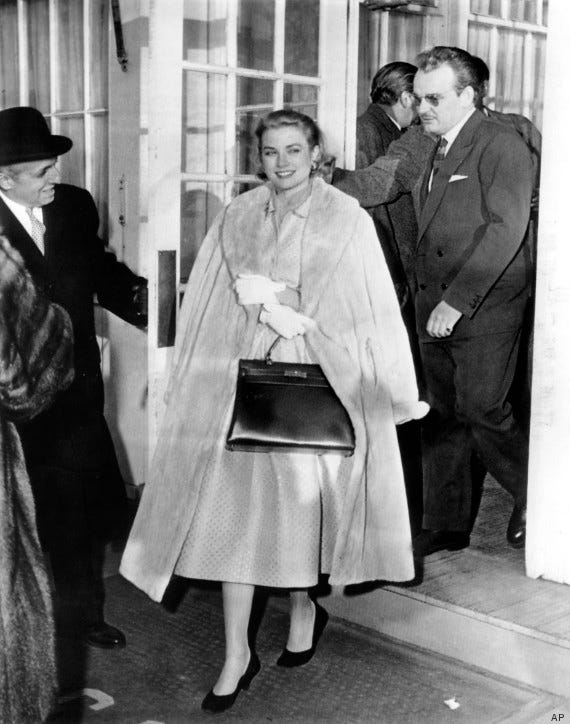

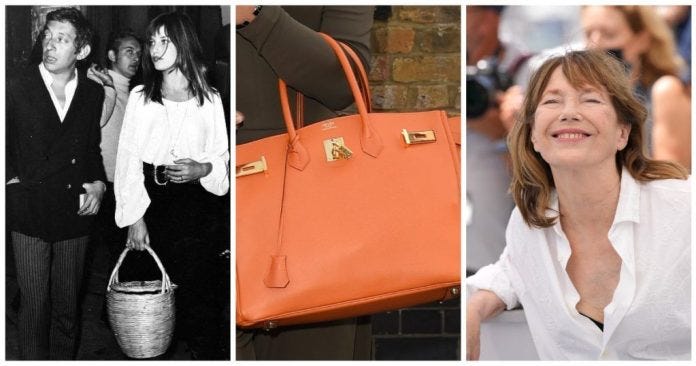



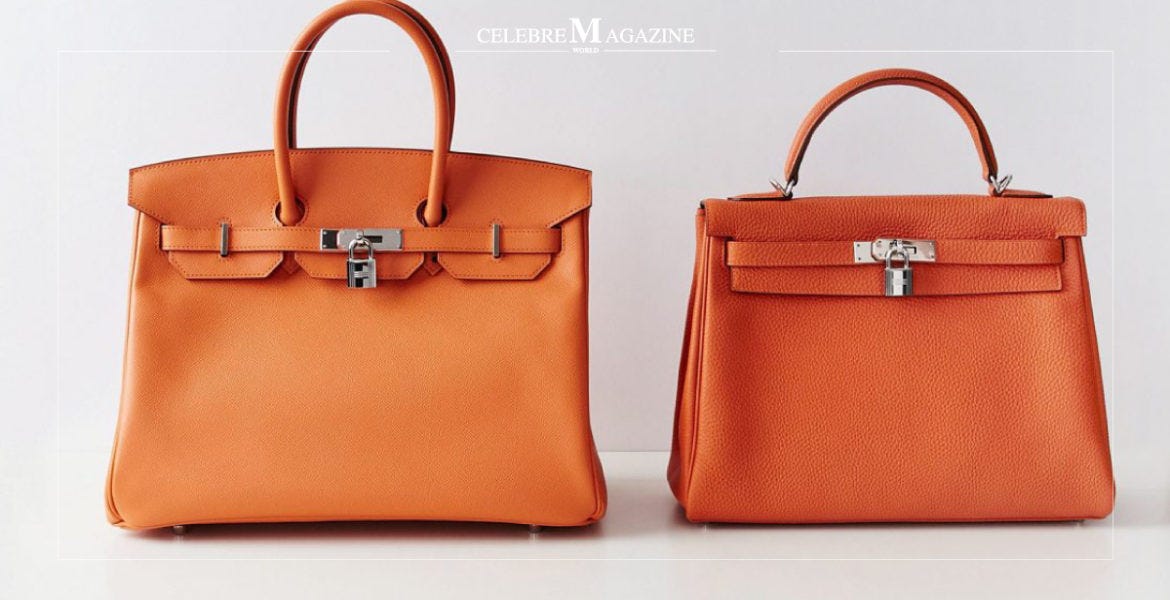
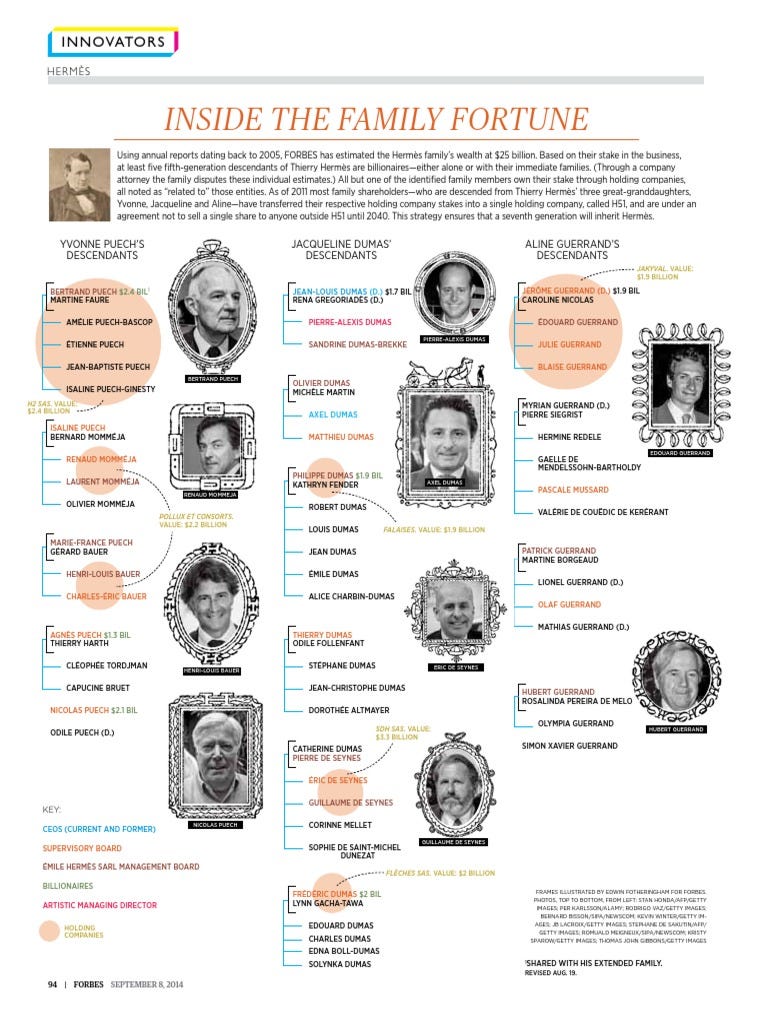
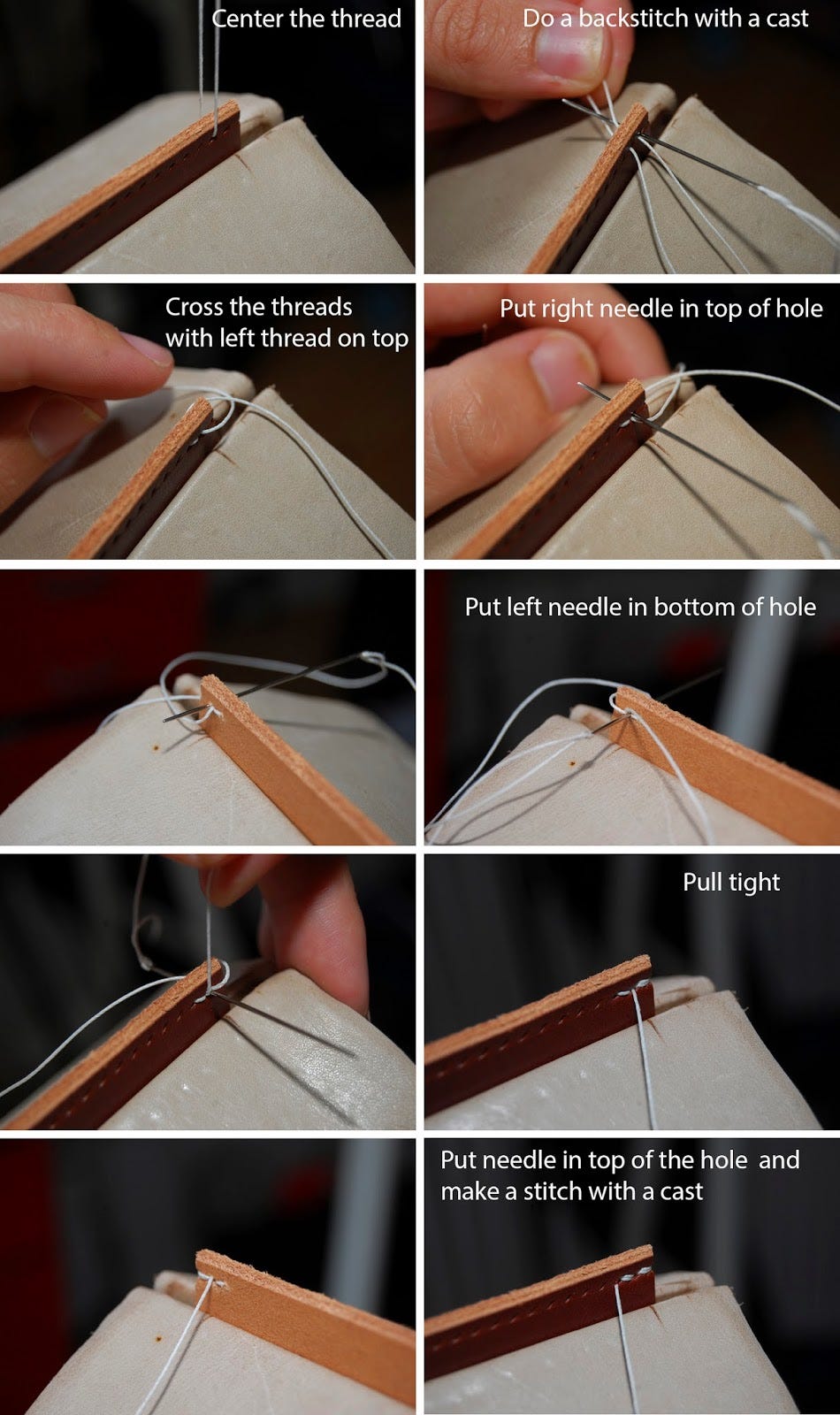
Several years ago at Basel, when Hermès had just bought its 25% share of Vaucher, two dial firms and a case manufacturer; I asked the CEO of Montres Hermes if they had a goal of becoming a fully fledged watch manufacturer.
He responded by telling me a story about their silk scarves - he told me that after WW2, the production of their scarves involved 20+ suppliers. There were people who grew the chrysalises, people who imported them to France, people who unspun the chrysalis, those who then spun the silk into a thread….and so on. But now they own every part of the chain, not because they really wanted to breed silk moths in South America. But because the one thing that a luxury client expects from the product is consistency, and you can only guarantee that consistency if you actually control every step of production.
Which is why I expect Hermès to be successful in the battle for the Sandoz watchmaking empire.
A few more interesting things:
-Hermès acquired John Lobb (Paris) in 1976
-There is a brief mention in the Acquired episode of annual handbag output - 120,000 units(!); this is attributed to a WSJ article. I found this shocking in comparison with the annual production figures of, e.g., Patek and AP
-Hermès is the cigar ashtray purveyor par excellence, in my humble opinion!